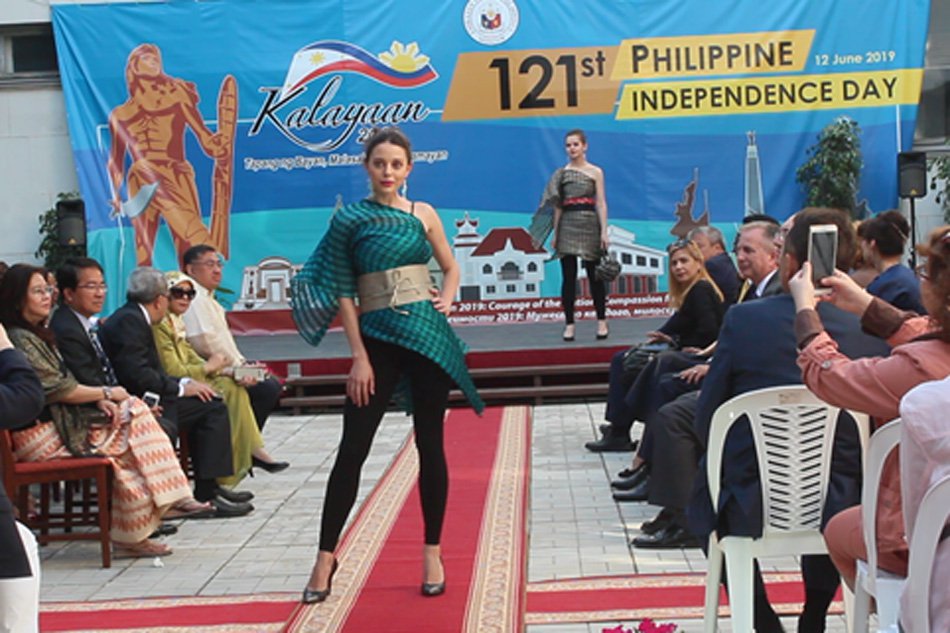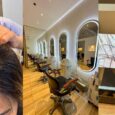In a diplomatic reception attended by ASEAN diplomats in Russia at Fiesta Filipiniana, Russian models, and the only Filipino model showcase handwoven formal dresses by Pinay international fashion designer Ditta Sandico, as reported by ABS-CBN.

Photo Credit: Niel Caburnay Tero, ABS-CBN News
Abacá’s scientific name is Musa textilis, which is apparently a species of banana native to the Philippines where it is grown as a commercial crop in the Philippines, Costa Rica, and Ecuador.
The fashion designer was exceedingly proud of her colorful wrap collection made of what she calls the “banaca” or banana abaca fiber.
Banana Abaca fiber is a banana variety of abaca where the abaca-banana trees have leaves coming from a pseudo trunk that has an exceptionally long, fiber-reinforced and interwoven leaf stems.
The plant of the abaca is commonly known as Manila hemp which plays an important role in our economy as its mainly harvest for its fiber and leaf-stems.
Historically, the abaca is used for making rope as it has high tensile strength and is resistant to rotting. It is quite environmentally friendly and renewable. It has quite a potential f
“I think it’s really the fabric because we have always been working with banaca fabric for so long, since 20 years ago. It’s a totally different fabric that we would like to showcase to the world (because) it’s very original,” Sandico shares.
Sandico mainly intends on promoting Philippine textiles and the Filipino culture to the Russian community so that we may showcase Philippine fashion as part of the cultural cooperation between our two countries.
“Maganda ang kanilang ninanais para sa atin. ‘Yong ating mga produkto ay sobrang na-appreciate hindi lang sa pag-design kung hindi sa mga texture ng mga fabric. Sana’y tuloy-tuloy tayo makinabang at paggawa ng mga produktong ito para sa ikauunlad nating lahat,” Sandico mentioned.
Ambassador Carlos Sorreta is leading the initiative of the embassy in Russia where there was an introduction to the traditional garments and fabrics that used indigenous materials. Other than the clothes, the accessories and other bags made from the Philippines also grabbed the attention of the majority.
Furthermore, it was also a privilege that there was a Pinay model who was able to take part in showcasing the dresses along with the other professional Russian models.
“Sobrang saya at nakaka-proud kasi napili ako ng sikat na designer na isa sa rarampa sa fashion show,” saad ni Mira Lee.
(Rough translation: It’s very fulfilling and a proud moment as I was chosen by a famous designer to be part of the fashion show)
“I have to congratulate Ambassador Sorreta for a wonderful reception today. It reminded me of our good times when we were in the Philippines for the last three years. Our best regards to our Philippine friends,” Thai ambassador Thanatip Upatising gives praise to the Filipino designer.
Pinoy fashion designers are making a statement in the international industry and we’re proud to have them showcase the beauty the Philippines has to offer.
Shoutout to all Filipino designers!




